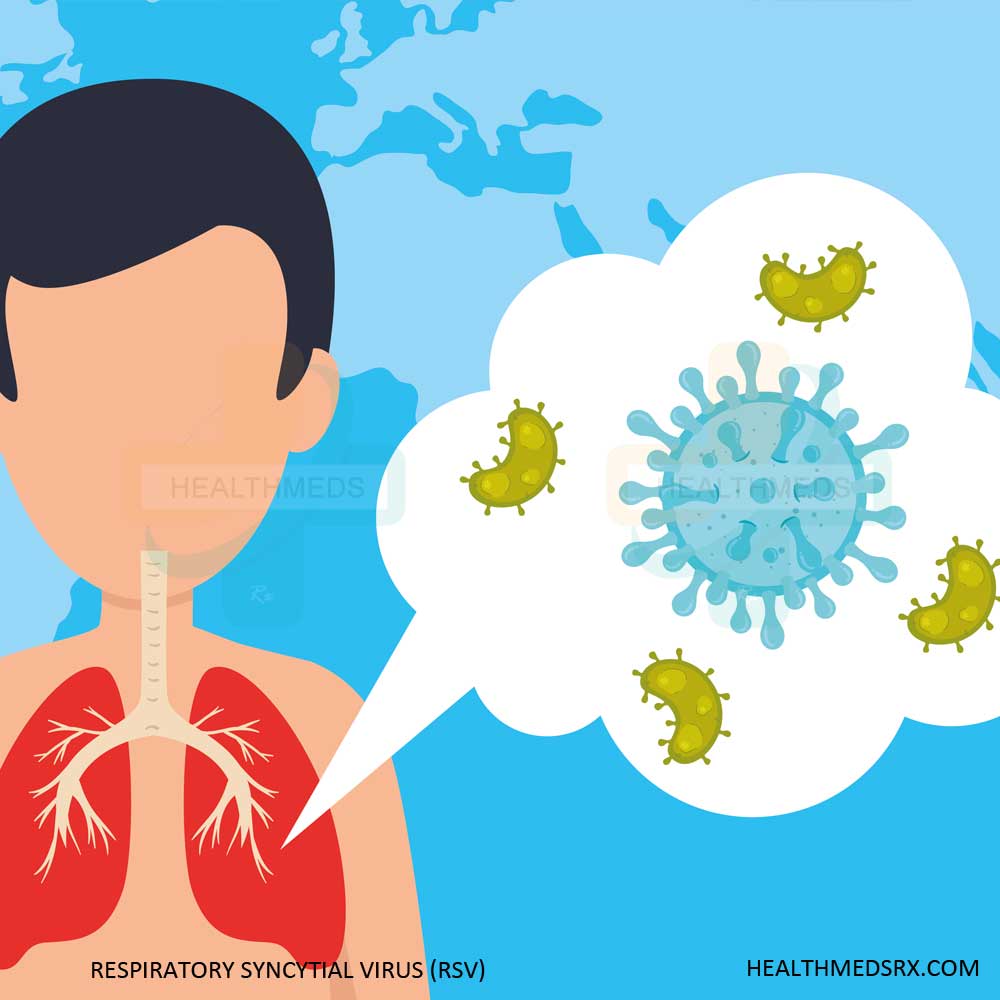Respiratory Syncytial Virus (RSV) is a top reason for respiratory sickness all over the world. While it usually leads to mild cold-like signs in healthy grown-ups, it can bring about serious breathing issues in babies, young kids, old folks, and people with weak immune systems.
Its seasonal spread mostly happens in the fall and winter times which poses a big public health problem. This blog looks at all you should know about RSV; from signs and diagnosis to its ability to spread and ways to treat.
What is Respiratory Syncytial Virus (RSV)?
RSV is a spreadable virus that mainly hits the breathing tubes. It is a one-strand R͏NA virus from the paramyxovirus group. RSV aims at the surface of the breathing system, causing swelling and mucus build-up. Its effect is worse in weak groups like early babies, young kids with heart or lung issues, and old folks with weak defense systems.
RSV moves through tiny drops that come out when a sick person coughs sneezes or talks. It can also move by touching dirty surfaces or by putting hands to face. Because it spreads easily, Respiratory Syncytial Virus often goes fast in places like schools, day-care centers, and nursing homes.
Symptoms of RSV Infection
The signs of RSV can go from small cold-like signs to big breathing trouble, based on the person’s age and health.
Mild Symptoms (Common in Healthy Adults):
- Runny nose
- Sneezing
- Mild cough
- Congestion
- Sore throat
- Low-grade fever
- Fatigue or general discomfort
Bad Signs (More Frequent in Weak Groups)
- Persistent cough
- Rapid or labored breathing
- Wheezing sounds
- Blue lips or nails (a sign of not enough oxygen)
- Difficulty feeding or swallowing (in infants)
- Drying out (less peeing, parched mouth, or weeping without tears)
In bad cases, RSV can cause issues like;
- Bronchiolitis: It is a swelling of the tiny tubes in the lungs.
- Pneumonia: A lung sickness that can be deadly for babies and old people.
- Apnea: Shortstop of breath, especially in small babies born early.
How is Respiratory Syncytial Virus Diagnosed?
To find RSV, you check signs and do some tests to show the virus is there.
- Clinical Evaluation
- A health expert starts by looking at the person’s signs and past health. A body check may mean hearing the chest for a wheeze or crack sound.
- Diagnostic Tests
- Several tests can confirm RSV infection:
- Nose Test: A bit of slime from the nose is looked at for Respiratory Syncytial Virus stuff or genes.
- Polymerase Chain Reaction (PCR) a very keen test ͏that finds virus RNA, is often used for better check-ups.
- Chest X-ray: Used in bad cases to spot troubles like lung infection, COPD or small airway illness.
- Blood checks: These can be made to look for high white blood cell counts or oxygen levels.
- Several tests can confirm RSV infection:
- Monitoring Oxygen Levels
- Pulse oximetry is used to check the amount of oxygen in blood, mainly for folks who have trouble breathing.
How Long is Respiratory Syncytial Virus Contagious?
Knowing how long RSV is spreadable helps in cutting down its spread.
- In Adults: Grown-ups with Respiratory Syncytial Virus are often able to spread it for 3 to 8 days after the start of signs. But, people with weak immune systems can stay able to pass it on for many weeks.
- In Babies: Babies and little kids with Respiratory Syncytial Virus can let out the virus for more time—up to 1 or 2 weeks after signs fade. In cases of bad sickness or weak immune folks, the time they can spread it may go past this span.
- Key Point: Even people without signs can spread Respiratory Syncytial Virus, so it’s key to keep clean and cut down on contact with at-risk groups during busy RSV time.
Treatment Options for Respiratory Syncytial Virus
There is no clear fix for Respiratory Syncytial Virus, but help care and safe steps can cut down its effect a lot. Care mainly looks at easing signs and making sure that issues are kept away.
- Home Care and Symptom Relief
- For͏ light Respiratory Syncytial Virus cases, at-home fixes and store-bought cures are often enough.
- Rest and Water: Make sure the patient has enough rest and drinks water to help get better.
- Salty nose drops and Suctioning: These help clean goop from the nose holes, mostly in babies.
- Fever Care: Store medicines like acetaminophen or ibuprofen can lower fever and ease pain. (Avoid a aspirin in kids because of the risk of Reye’s syndrome.)
- Cool-Mist Humidifier: Adding wetness to the air can help breathe and cut down on a stuffy nose.
- Hospital Care for Severe Cases
- In bad cases, you might need to stay in a hospital. Care in a hospital can have:
- Supplemental Oxygen: To address low oxygen levels.
- IV drinks: To stop dryness in people who can’t take enough drinks.
- Machines that help you breathe: In tough cases, machines can be used to help with breathing.
- Antiviral and Preventive Medications
- Palivizumab: This single-type antibody is not a cure but an action to stop sickness for little kids and babies at high risk. Given each month in Respiratory Syncytial Virus time, helps lower the chance of bad ͏illness.
- Ribavirin: A medicine that fights viruses sometimes used in bad Respiratory Syncytial Virus cases, but its use is small and debated.
- Avoidance of Unnecessary Antibiotics
- As RSV is a germ illness, antibiotics don’t work unless there’s a second bacterial sickness.
Preventing RSV
Stopping is the best shield against Respiratory Syncytial Virus, mainly for those at high risk. Easy clean habits and early steps can greatly lower the chance of getting sick.
1. Good Hygiene Practices
- Keep hands clean: Wash your hands well with soap and water for 20 seconds or more.
- Clean Surfaces: Often wipe down things like door knobs, playthings, and phones that many hands touch.
- Cough and Sneeze Manners: Use a tissue or your arm to hide your mouth and nose when you cough or sneeze.
- Stay away from touching your face. Keep the germ out of the eyes, nose or mouth.
2. Minimize Exposure
- Keep babies and people at high risk far from packed spots, especially in RSV time.
- Stay away from folks showing signs of a cold.
- Do not share a cup, utensil or towel with sick people.
3. Vaccination Research
- No RSV shot yet, while some studies are trying to make good shots for both babies and old folks.
Why RSV Awareness Matters?
͏Respiratory Syncytial Virus often goes unnoticed when we look at other breathing sicknesses like flu or COVID. But it is the main reason for getting sent to the hospital among babies and plays a big part in lung sickness in older folks. By making people know more about its signs, spread, and how to avoid it, we can help keep weak groups safer and lessen the load of the virus.
Respiratory Syncytial Virus (RSV) is a common lung virus that can lead to bad sickness in high-risk groups. While easy cases often get better with help, knowing the signs, tests, and ways to treat them is key for handling serious cases. Keeping clean and reducing contact are important steps in stopping the spread of Respiratory Syncytial Virus.


